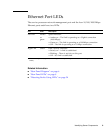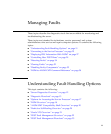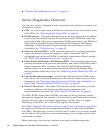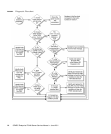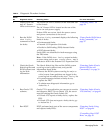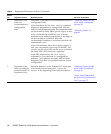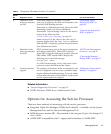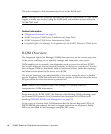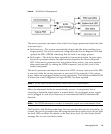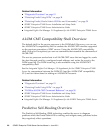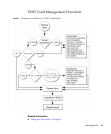
Managing Faults 17
Related Information
■ “Server Diagnostics Overview” on page 12
■ SPARC Enterprise T5440 Server Administration Guide
Options for Accessing the Service Processor
There are three methods of interacting with the service processor:
■ Integrated Lights Out Manager (ILOM) shell (default) – Available via the System
Management Port and the Network Management Port.
■ ILOM browser interface (BI) – Documented in the Integrated Lights Out Manager 2.0
User’s Guide.
■ ALOM CMT compatibility shell – Legacy shell emulation of ALOM CMT.
8. Determine if the
fault was detected
by PSH.
If the fault displayed included a uuid and
sunw-msg-id property, the fault was detected by the
Predictive Self-Healing software.
If the fault is a PSH-detected fault, refer to the PSH
Knowledge Article web site for additional
information. The Knowledge Article for the fault is
located at the following link:
(http://www.sun.com/msg/)message-ID
where message-ID is the value of the sunw-msg-id
property displayed by the show faulty command.
After the FRU is replaced, perform the procedure to
clear PSH-detected faults.
“Identifying Faults
Detected by PSH” on
page 48
“Clear Faults Detected by
PSH” on page 54
9. Determine if the
fault was detected
by POST.
POST performs basic tests of the server components
and reports faulty FRUs. When POST detects a
faulty FRU, it logs the fault and if possible, takes the
FRU offline. POST detected FRUs display the
following text in the fault message:
Forced fail reason
In a POST fault message, reason is the name of the
power-on routine that detected the failure.
“POST Fault Management
Overview” on page 22
“Clear Faults Detected
During POST” on page 52
10. Contact technical
support.
The majority of hardware faults are detected by the
server’s diagnostics. In rare cases a problem might
require additional troubleshooting. If you are unable
to determine the cause of the problem, contact your
service representative for support.
“Obtain the Chassis Serial
Number” on page 66
TABLE: Diagnostic Flowchart Actions (Continued)
Action
No. Diagnostic Action Resulting Action For more information



